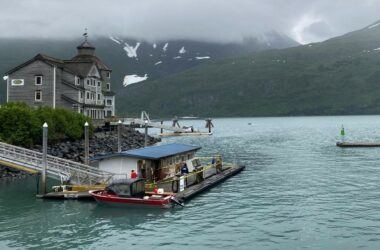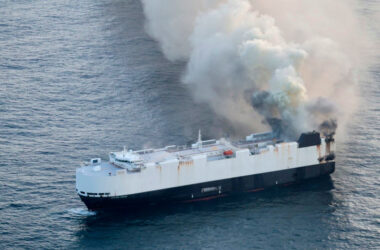The Kenai Peninsula Borough Assembly will review and vote this Tuesday, Apr. 15, on a resolution demanding that Congress and federal agencies keep Alaska’s marine weather buoys operational for maritime safety and environmental protection. The resolution is sponsored by Assembly Members Willy Dunne of Homer and Leslie Morton of Soldotna.
The legislation corresponds to an Alaska legislative resolution that addresses the current NDBC station outages that monitor wind, waves, and ocean conditions. At least seven out of the 27 buoy stations in Alaska remain offline right now, with the Seal Rocks buoy being one of them near Prince William Sound. The Seal Rocks buoy is an essential monitoring station for tanker ships moving between the Trans Alaska Pipeline terminal in Valdez.
The U.S. Coast Guard’s Vessel Traffic Service uses Seal Rocks as its primary source for weather-related closure information. According to safety regulations established after the Exxon Valdez spill, tankers cannot pass through Hinchinbrook Entrance when wind or wave conditions reach specific safety thresholds. The Coast Guard must use forecasts and less reliable observations instead of real-time buoy data, which raises the possibility of maritime accidents.
The borough’s resolution explains that any maritime accident would result in severe damage to ecosystems, subsistence ways of life, and economic impacts that would specifically harm communities that depend on fishing, aquaculture, tourism, and marine transportation.
In addition to calling for the full restoration of buoy functionality, the resolution urges Congress to maintain support for NOAA’s forecasting and observation services, which have been impacted by deep staffing and budget cuts under the Trump administration’s Department of Government Efficiency. NOAA has already lost about 10% of its National Weather Service workforce; more cuts are expected.
The resolution asks Congress to include language in the 2025 Consolidated Appropriations Act requiring NOAA to restore and ensure the reliability of the buoy system. It also requests ongoing support for the broader weather and ocean observation systems serving Alaska’s coastlines.
If approved, the borough will forward the resolution to Alaska’s congressional delegation, NOAA leadership, and key Coast Guard contacts. The measure joins growing calls from state and regional bodies seeking urgent federal attention to deteriorating marine safety infrastructure.
Cover photo credit: Chief Warrant Officer Jeffrey Ritter, 1st Lt. aboard Coast Guard Cutter Sycamore, supervises the launch of a National Oceanic and Atmospheric Association weather buoy near the Hinchinbrook Entrance to Prince William Sound in Alaska, Dec. 10, 2018. The buoy will be used to record and transmit weather data. (U.S. Coast Guard photo by Petty Officer 1st Class Nate Littlejohn.)






